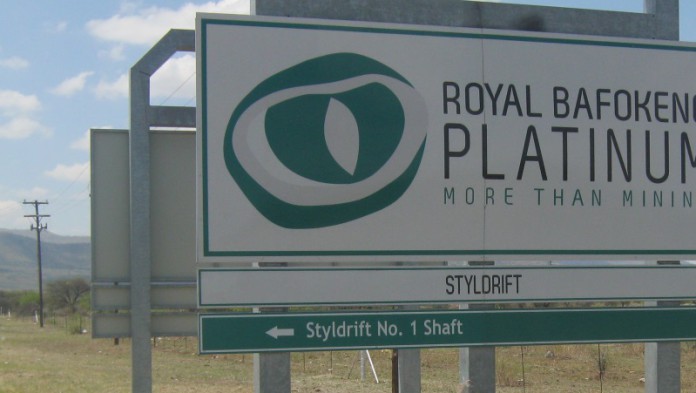
ROYAL Bafokeng Platinum (RBPlat) is to issue R1.2bn in corporate bonds in order to complete some R3.2bn in finance for the expansion of its Styldrift I project to 150,000 tonnes of ore per month.
The issuance is not ideal considering the pressure under which RBPlat’s share has been placed in the last 30 days amid a strengthening of the rand against the dollar and relatively uninspiring platinum group metal (PGM) prices.
The project, currently at a run-rate of 50,000 tonnes of month, is scoped to do 230,000 tonnes per month equivalent to platinum production of 300,000 ounces a year, doubling RBPlat’s total current platinum production.
In addition to the corporate bonds, some R2bn in corporate debt facilities have been negotiated. Shareholders will meet by May 15 to vote on the issuance of shares.
The total cost of the project for this phase of the project is R4.75bn which the balance to be funded by RBPlat’s partner, Anglo American Platinum (Amplats), a listed subsidiary of Anglo American.
In 2016, amid signs the rand price of platinum was reviving, the company committed to spend of R1bn on Styldrift I in which production would be about 50,000 tonnes of ore per month. Of this capital outlay, some R700m was to be funded from cash derived from on-reef development at RBPlat’s operating mine, Bafokeng Rasimone Platinum Mine (BRPM) with the balance sourced from surplus cash resources.
However it became apparent at the group’s full-year results presentation on February 28 that the company would be forced to look at other “capital market” solutions as Martin Prinsloo, CFO of RBplat then termed it.
This was because cash flow from the firm’s existing operation, Bafokeng Rasimone Platinum Mine (BRPM) was not as robust as previously owing to a decline in the amount of higher grade Merensky reef that operation was mining.
RBPlat said it would put one of the shafts at BRPM under review and has subsequently turned to the capital markets to fund Styldrift I – a step it has been reticent to do in the past.
Johann Steyn, an analyst for Citi, said RBPlat had at least been proactive by issuing shares although it added that as a funding mechanism it was not ideal.
“Whilst it is not ideal for RBP to have to raise more equity capital (deferred in this case) to complete Styldrift, it cannot come as a surprise to the market,” he said in a note.
“In fact, we appreciate the proactive nature with which RBP is putting together a financing package. Some of its peers have historically not been proactive in this regards, with unpleasant consequences.”
The corporate bonds represent 13.5% of RBPlat’s share capital and are expected to mature on March 16, 2022. They will be issued at par and are expected to carry a fixed rate coupon of between 6.5% and 7% a year payable semi-annually. The initial conversion price is expected to be set at a premium of between 30% and 35% to the volume weighted average price or RBPlat ordinary shares from the market open and close today.
Shares in RBPlat were 5.4% weaker in the first hour of trade in Johannesburg and have declined about 24% over the last month – a decline that mirrors other platinum producers such as Impala Platinum and Anglo American Platinum. Issuing shares at this point suggests RBPlat has been painted into a corner.
But RBPlat put a positive spin on the share issue saying that this was an appropriate time to scale up Styldrift I having already pumped in R1bn to get it to the 50,000 tonnes per month level.
It said the average rand basket price achieved in 2016 of some R18,906 per platinum ounce was roughly R1,500 per Pt oz higher than in 2015 therefore it made sense to “secure” the expansion which is planned for completion by end-2018.
It also said that in targeting a mining rate of 150,000 tonnes instead of proceeding directly to its ultimate target of 230,000 tonnes it would secure “… the optimal level of Merensky production” without having to fund the processing plant and infrastructure that would be required for the higher production, especially given uncertain market conditions.
“The RBPlat Merensky production will also position RBPlat further down the cost curve securing the sustainability of the operation in the future,” it said.
“Progressing Styldrift I to a 150,000 tonnes per month project positions it well for the ultimate ramp-up to a 230,000 tonnes per month Merensky operation when further investment is warranted by the market conditions,” it added.








